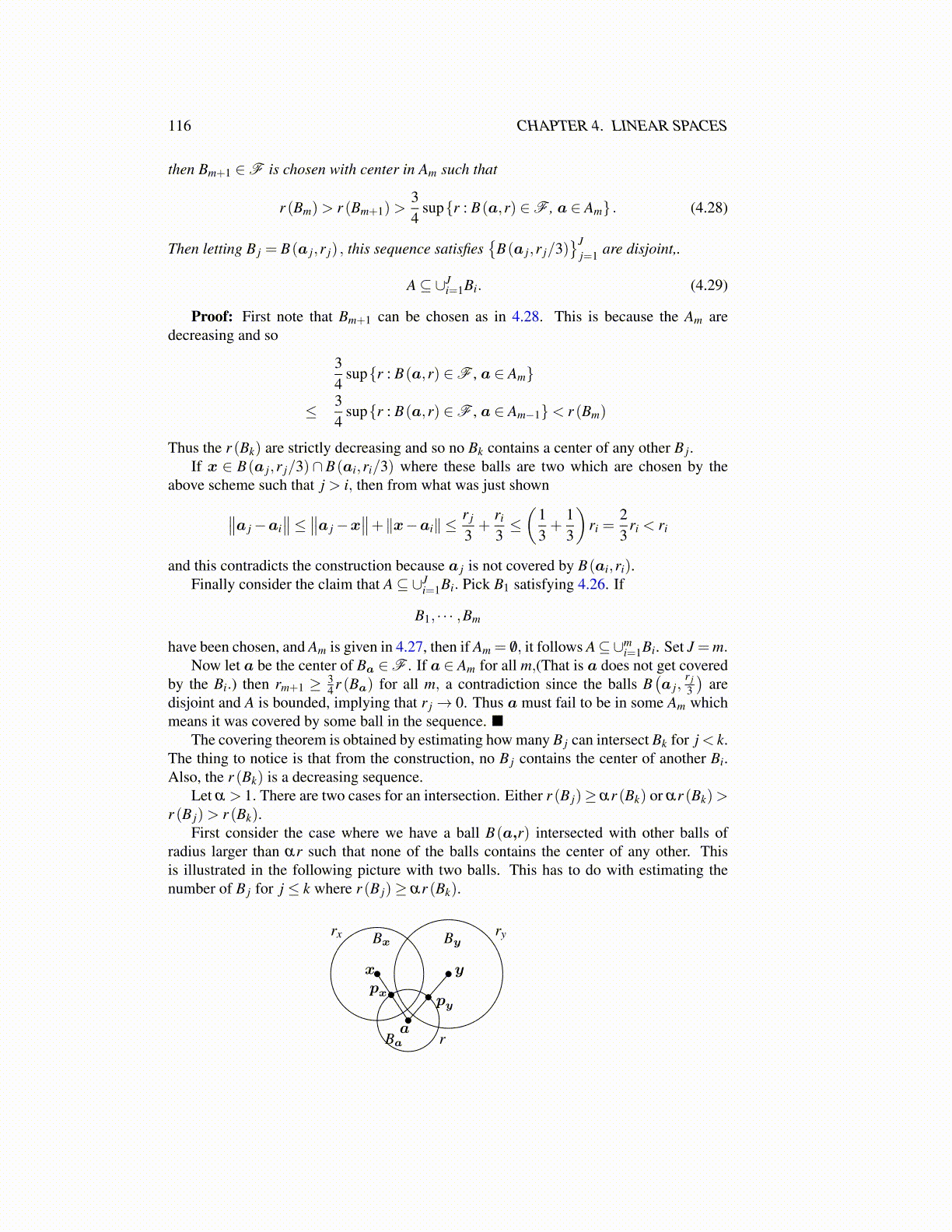
116 CHAPTER 4. LINEAR SPACES
then Bm+1 ∈F is chosen with center in Am such that
r (Bm)> r (Bm+1)>34
sup{r : B(a,r) ∈F , a ∈ Am} . (4.28)
Then letting B j = B(a j,r j) , this sequence satisfies{
B(a j,r j/3)}J
j=1 are disjoint,.
A⊆ ∪Ji=1Bi. (4.29)
Proof: First note that Bm+1 can be chosen as in 4.28. This is because the Am aredecreasing and so
34
sup{r : B(a,r) ∈F , a ∈ Am}
≤ 34
sup{r : B(a,r) ∈F , a ∈ Am−1}< r (Bm)
Thus the r (Bk) are strictly decreasing and so no Bk contains a center of any other B j.If x ∈ B(a j,r j/3)∩ B(ai,ri/3) where these balls are two which are chosen by the
above scheme such that j > i, then from what was just shown∥∥a j−ai∥∥≤ ∥∥a j−x
∥∥+∥x−ai∥ ≤r j
3+
ri
3≤(
13+
13
)ri =
23
ri < ri
and this contradicts the construction because a j is not covered by B(ai,ri).Finally consider the claim that A⊆ ∪J
i=1Bi. Pick B1 satisfying 4.26. If
B1, · · · ,Bm
have been chosen, and Am is given in 4.27, then if Am = /0, it follows A⊆∪mi=1Bi. Set J =m.
Now let a be the center of Ba ∈F . If a ∈ Am for all m,(That is a does not get coveredby the Bi.) then rm+1 ≥ 3
4 r (Ba) for all m, a contradiction since the balls B(a j,
r j3
)are
disjoint and A is bounded, implying that r j→ 0. Thus a must fail to be in some Am whichmeans it was covered by some ball in the sequence. ■
The covering theorem is obtained by estimating how many B j can intersect Bk for j < k.The thing to notice is that from the construction, no B j contains the center of another Bi.Also, the r (Bk) is a decreasing sequence.
Let α > 1. There are two cases for an intersection. Either r (B j)≥ αr (Bk) or αr (Bk)>r (B j)> r (Bk).
First consider the case where we have a ball B(a,r) intersected with other balls ofradius larger than αr such that none of the balls contains the center of any other. Thisis illustrated in the following picture with two balls. This has to do with estimating thenumber of B j for j ≤ k where r (B j)≥ αr (Bk).
Ba
Bx By
ar
x
rx
y
ry
pxpy